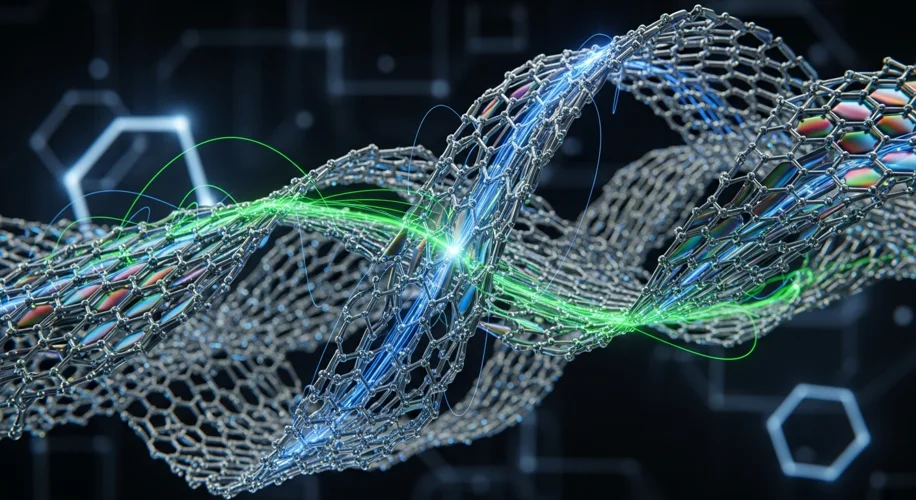Okay, so hear me out… scientists in China have spotted something super rare and honestly, pretty mind-bending: quantum friction in folded graphene.
I know, I know, “quantum” and “friction” together sounds like something straight out of a sci-fi flick, but this is real science happening right now. So, what exactly is this stuff?
Basically, graphene is this amazing material made of a single layer of carbon atoms arranged in a honeycomb lattice. It’s super strong, conducts electricity really well, and it’s incredibly thin – like, one atom thin. We’ve talked about graphene before, and how it’s packed with potential for everything from faster electronics to stronger materials.
Now, imagine taking this sheet of graphene and folding it. When you fold materials, especially at the atomic level, things can get weird. These researchers found that when they folded graphene in a specific way, creating what’s called a ‘moiré superlattice,’ they could actually detect a tiny amount of friction. But this isn’t your everyday friction, like when you rub your hands together. This is quantum friction.
What does that even mean?
In the quantum world, particles can behave in really counter-intuitive ways. This friction they detected is thought to be related to how electrons interact with the specific patterns created by folding the graphene. Think of it like tiny ripples or energy transfers happening at the most fundamental level of matter. It’s a result of quantum mechanics, the set of rules that govern the universe at the smallest scales.
Why is this a big deal?
Detecting quantum friction isn’t easy. It’s a subtle effect, and finding it in a material like graphene is a major scientific achievement. For us tech enthusiasts, this opens up new avenues for understanding how materials behave under extreme conditions and how we can potentially manipulate them.
This kind of research could lead to:
* New electronic devices: Imagine components that behave differently based on their atomic structure, allowing for more specialized processors or sensors.
* Better material design: Understanding these quantum effects might help us engineer materials with properties we can’t even dream of yet.
* Advancements in quantum computing: While this isn’t quantum computing itself, understanding quantum interactions in materials is fundamental to building more stable and powerful quantum computers.
It’s still early days, and the practical applications are a long way off, but it’s seriously cool to see science pushing boundaries like this. It reminds me of how much we still have to learn about the universe, even with materials as seemingly simple as carbon atoms arranged in a sheet.
What do you guys think about this? Does the idea of quantum friction blow your mind, or is it just another Tuesday in the world of physics? Let me know in the comments below! And if you’ve got any questions, fire away. I’ll do my best to answer them.

